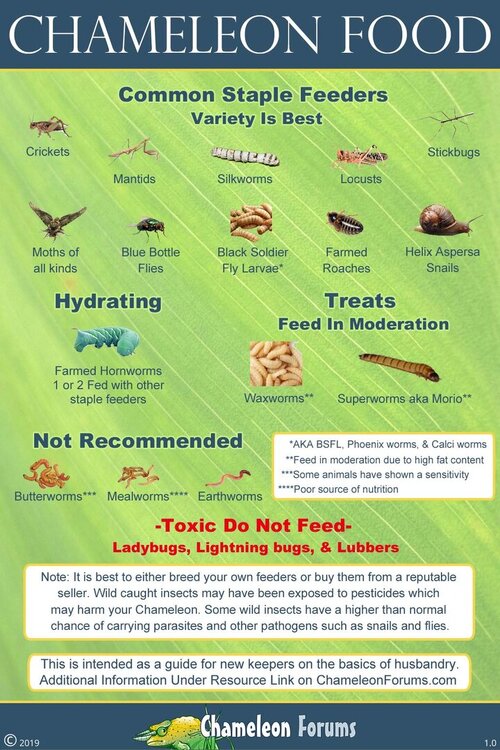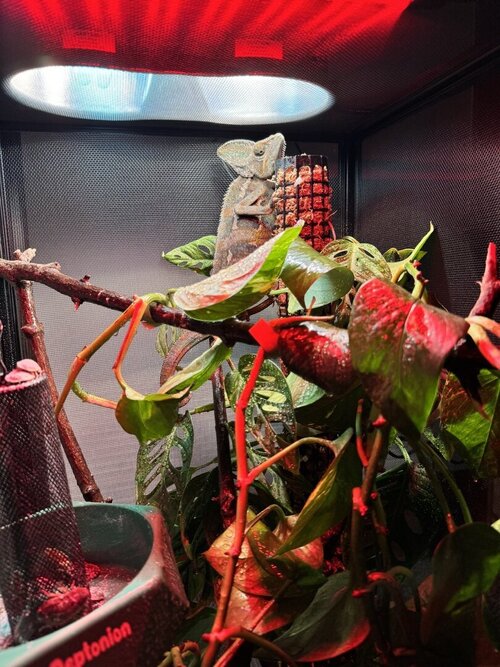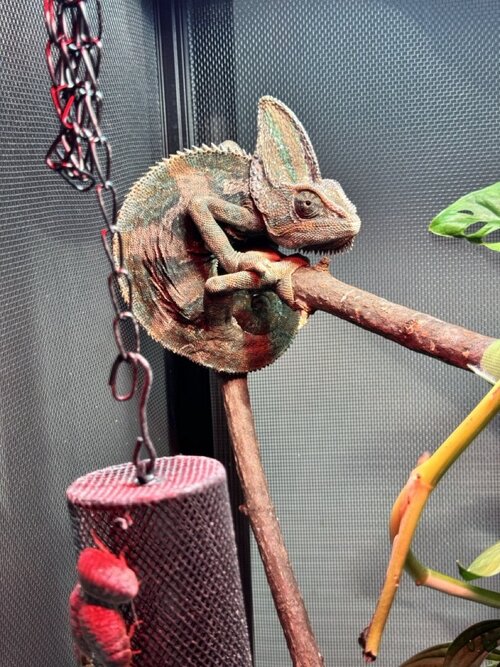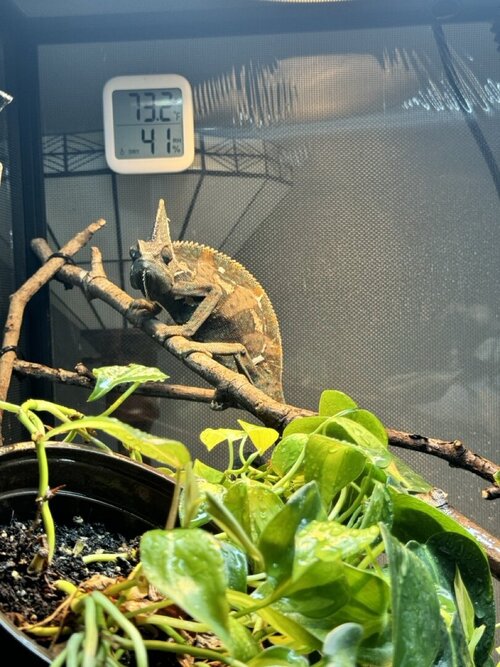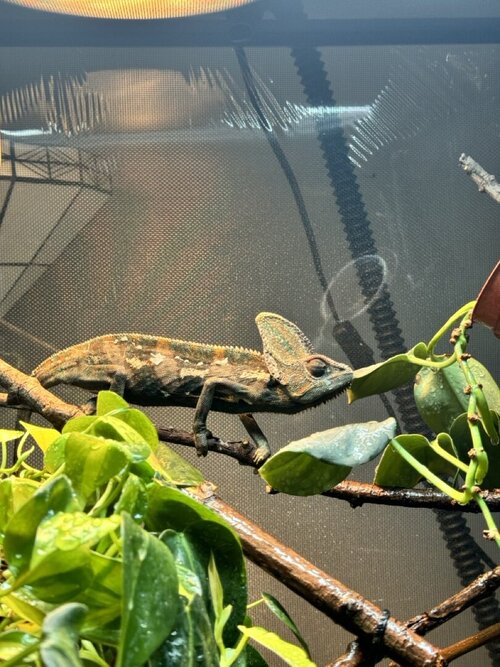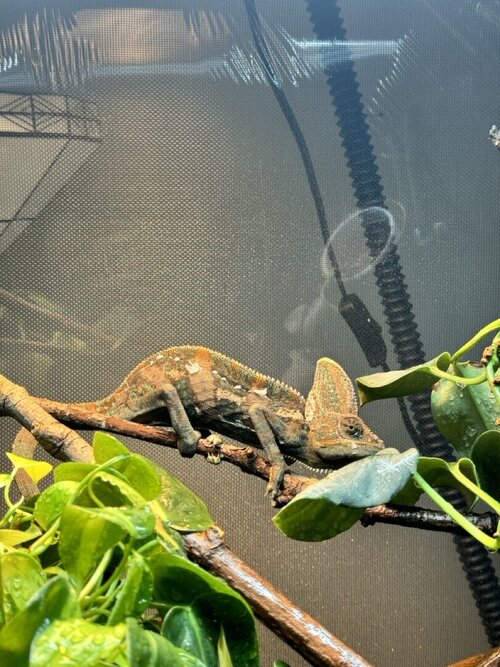Jshimmy
New Member
Hey all. First time poster here. I recently got a male veiled a couple months ago and he always seems to be mostly brown unless he’s sleeping. He also tends to sit around his basking spot most of the day. Is this normal or is something wrong with my husbandry that’s causing this? I attached a picture of his enclosure for reference
Chameleon Info:
Cage Info:
Chameleon Info:
- Your Chameleon - Male veiled chameleon, approx. 9mo-1yr old
- Handling - Only when necessary, recently switched his enclosure
- Feeding - 5-6 dubias a day and a super worm. Recently ended a two week hunger strike where he’d eat only hornworms
- Supplements - All feeders dusted with Pangea reptical, reptivite multivitamin w d3 1-2x a month
- Watering - hand mist once in the morning and once before lights go out. See him drink often
- Fecal Description - solid brown w white urates. Never been tested for parasites
- History - got him from a breeder at a reptile show a couple months back. Previously was using the smaller reptibreeze and incorrect lighting (compact uvb) until about a week ago
Cage Info:
- Cage Type - 2x2x4 reptibreeze with weather proofing on the back/sides for humidity
- Lighting - 75w Arcadia floodlight w deep dome for basking and reptisun 24” t5 5.0 uvb
- Temperature - ambient reads high 80s in the basking spot and 72 towards the bottom
- Humidity - high 30s/low 40s during the day. Fogger goes at night and keeps it around 60-70%
- Plants -All live plants. A couple different pothos, philodendrons and monstera at the bottom
- Placement - Corner of my living room
- Location - northeast Ohio





